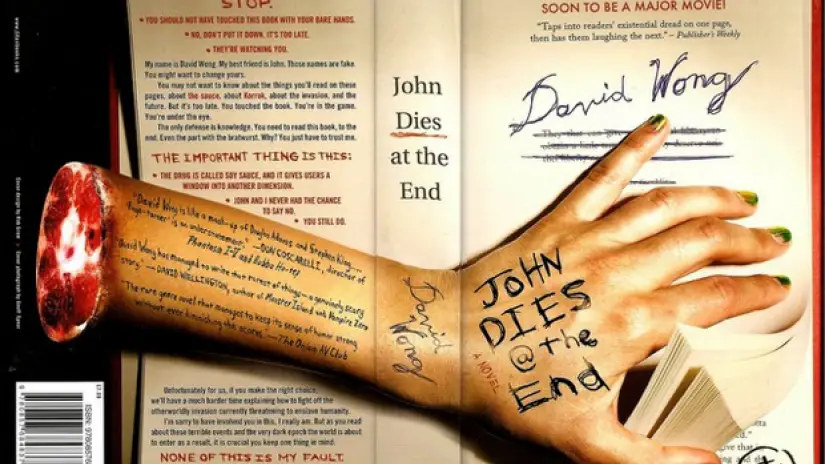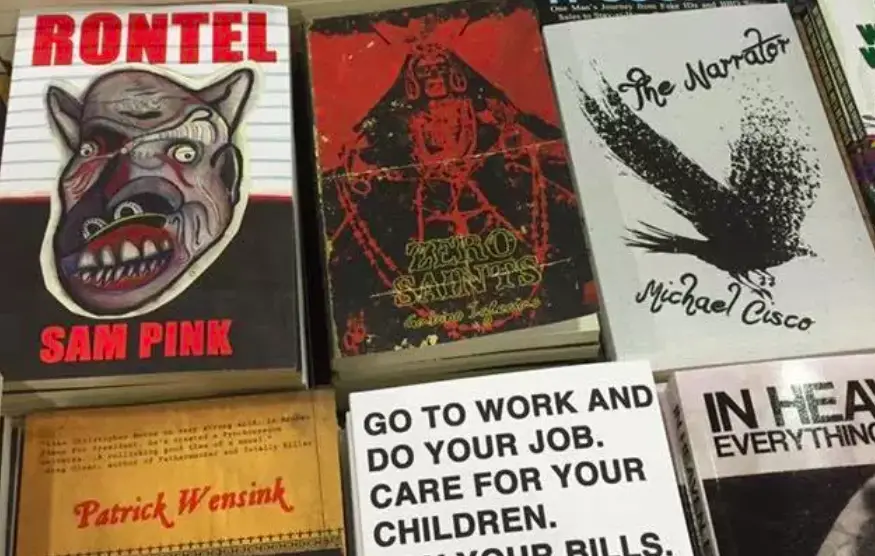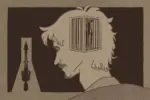Most fans of the critically acclaimed cartoon “South Park” think back fondly to the Season 14 episode titled “The Tale of Scrotie McBoogerballs,” in which the boys wrote the most disgusting book in human history to the delight of the Colorado town and nation. The boys’ novel was so disgusting that it caused readers to vomit from the first paragraph alone.
Although the boys claimed there were no deeper themes hidden within the book and it was merely written to be as disgusting as possible, readers of the fabricated novel gleaned contrived meaning from the revolting images portrayed in the book.
Today, authors of an emerging literary genre, known as bizarro fiction, seek similar reactions from their fans. They manage to both gross-out readers and provide cultural commentary within their works.

Although bizarro fiction has lurked within the bowels of literature’s murky underground for just over 15 years, the genre has seen recent success with the addition of director Don Coscarelli’s film adaptation of David Wong’s best-selling novel, “John Dies at the End,” to Netflix.
David Wong’s latest novel, “What the Hell Did I Just Read,” has seen mainstream success and has reached the shelves of bookstores nationwide.
What makes bizarro fiction so unique and worth discussing is its blatant transparency and honesty, its visceral imagery and its willingness to churn readers’ stomachs. If readers aren’t uncomfortable in some way, they’re not reading a good piece of bizarro fiction.
Author Lance Carbuncle describes good bizarro fiction to be “like chicken and waffles with a spicy jalapeno maple syrup. It sounds kind of gross if you try to explain it and it shouldn’t really work, but it tastes so damn good. Like the burps and messy bowel movement from the chicken and waffles, a good bizarro story will keep coming back on you.”
For a man who wrote a book like ”Grundish and Askew,” about a pair of white trash partners in crime who embark on a killing spree, this description seems appropriate. His latest novel, “Unmentionables,” isn’t any less gritty, with one of the main characters depicted as a hoarder of fetal pigs.
Bizarro fiction has its roots in the absurdism of Vonnegut, Chuck Palahnuik “Trainspotting” author, Irvine Welsh, and even the extreme horror of Clive Barker.
However, most fans of bizarro mark the genre’s beginning with the 2001 release of Carl Mellick III’s debut novel entitled “Satan Burger,” about a dystopian netherworld complete with vagina-like portals and sympathetic zombies.
Carl Mellick III has been fairly prolific since then, writing several novels and novellas, including titles like “The Haunted Vagina” and “Baby Jesus Butt Plug.” Mallick has even been referred to as “this generation’s Kurt Vonnegut.”
The reason bizarro fiction is increasing in popularity in recent years could be because of its gruesome and descriptive qualities. Art in the modern era is boundless and increasingly inclusive and accepting of odiousness.
Horror movies all compete with each other to be the most extreme while even comedians aspire to shock their audiences more and more every year.
In an era where audiences have seen it all, bizarro fiction still manages to leave readers heaving in disgust. More importantly, good bizarro encompasses great narratives and modern themes.
Bizarro and Splatter Punk publisher, Jim Goforth, at Wetworks Press says, “a solid story-line is always key to writing good bizarro. Throwing a whole bunch of random shit that is either grotesque or deliberately bizarre or over the top just to fit the genre doesn’t essentially equate to good fiction.”
There are myriad authors attempting to write bizarro that is merely a gross-out pissing contest, but memorable bizarro fiction always relies heavily on narrative and great storytelling to keep the reader turning the page.
Bizarro fiction also showcases its relevance in today’s society by encapsulating contemporary themes that are increasingly important in modern times.
Matthew Stokoe’s “Cows,” for example, sheds light on the horrors of the meat industry, as well as capturing the crushing reality of everyday existence in a modern, capitalist society.
Even less extreme bizarro authors, like Sam Pink, accentuate themes of loneliness and the dispiriting reality of unskilled labor, in novellas like “Person or Hurt Others.” Bizarro fiction is also surprisingly inclusive and intersectional. Trans characters are celebrated and gender roles are deliberately shifted in surprising ways within the genre.
Of course, subtlety is not bizarro fiction’s strong suit and the genre is not for everyone. For those who are easily squeamish, bizarro might be a bit much to handle.
Fans of horror, satire and absurdism, however, will find a deluge of prose to joyfully dig into. Bizarro serves as that last push over the edge into a harrowing severity many horror and dark humor fans crave.
Still, bizarro fiction remains primarily as an underground literary genre. While this is changing in recent years and bizarro’s popularity is on the rise, many of the biggest names in bizarro fiction remain shrouded in obscurity.
This is largely because many mainstream publishers have failed to recognize the growing trend of bizarro in literature.
Due to the deliberate apathy and contempt publishers hold toward the flagrant literary style, bizarro authors are often forced into self-publishing their books on Amazon with CreateSpace. As a result, many of these authors rely heavily on Amazon reviews and word of mouth for sales.
Bizarro fiction has done surprisingly well, in spite of adversity from mainstream publishers, and is only increasing in popularity as notable authors like Chuck Palahniuk write progressively more extreme content each year.
Small presses dedicated to bizarro, such as Eraserhead Press, Lazy Fascist and Wetworks have emerged in response to the emerging demand for bizarro and other extreme forms of literature.
Bizarro fiction is simply a reaction to the jaded nature of modern society. As culture continues to push boundaries of what is and is not acceptable, art’s extremities will continue to flourish beyond limits.
I suggest bizarro fiction to the impregnable college student. If a title like “The Haunted Vagina” doesn’t send a jolt through your depraved veins, nothing will.

















